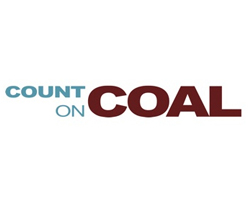January 19, 2022 - On December 30th, the Electric Reliability Council of Texas (ERCOT) issued a press release declaring that 322 power generating and transmission facilities had undergone stringent inspections indicating the Texas grid was ready for winter. Implied was that the grid disaster of the previous February, which left hundreds dead and millions without power or heat for days, wouldn’t be repeated. But what wasn’t included in ERCOT’s release was any mention of the natural gas delivery system—the leading culprit for February’s catastrophe.
Remarkably, almost a year later, the Texas grid and its heavy reliance on an unwinterized natural gas delivery system remain a ticking time bomb. ERCOT’s press release was like a captain getting on the intercom to tell passengers the engines and wings have been thoroughly checked out and are ready for takeoff but failing to mention the hole in the fuel tank hasn’t been touched.
The continuing danger to the Texas grid isn’t just the stuff of theory. Already this winter Texas got the worst kind of reminder of how vulnerable the system remains. During a cold snap in December, gas production and delivery plunged with key equipment once again freezing up. Nearly 1 billion cubic feet of gas had to be burned or was wasted due to weather-inflicted interruptions. Bloomberg said of the gas industry’s failure, “Despite calls for producers to harden their infrastructure against cold, much of the industry has managed to avoid doing so. The Texas Railroad Commission, the state’s top regulator of the industry, plans to adopt some weatherization standards but those won’t go into effect until 2023, and they include loopholes that allow some companies to opt out of compliance.”
Systemic Failure
Reflecting on the disaster last February, there’s good reason the chief energy officer at the University of Houston called the gas system’s performance a, “systemic failure.” In the lead up to the crisis, as cold weather swept through west Texas, the state’s gas production tumbled by some 11 billion cubic feet over nine straight days. A postmortem analysis found that, “crucially, 52% of the drop in volume came before ERCOT’s first power cut in the early hours of Feb. 15.” The gas system’s unraveling didn’t happen because the power system went down; rather, it was the first domino to fall for the grid failure to come.
In Senate testimony months after the Texas catastrophe, North American Electric Reliability Corporation President and CEO Jim Robb testified that, “The area that Congress should reflect on, and potentially take action, is to think about how [weatherization] extends into the natural gas and fuel sectors. Because having a great winterized plant with no fuel in front of it isn’t very valuable. And that’s where our authorities right now stop.”
Just One Dimension of a National Reliability Crisis
Despite clear analysis of what went wrong in Texas and a clear understanding of what’s required to address the situation, Texas remains dangerously vulnerable to the same scenario that plunged it into frozen darkness last February. If action hasn’t been taken to fix the challenge in Texas – where pain of failure was most severe – is there any reason to believe the same vulnerabilities have been addressed in other states?
The nation’s overreliance on just-in-time fuel delivery is a glaring problem that is just one troubling dimension of a national grid reliability crisis. Fuel security and fuel optionality continue to disappear just when the need for fuel assurance and robust operating buffers is more pressing than ever. The pivot to intermittent, weather-dependent generation is adding complexity and stress to the grid regulators and utilities are only beginning to fully understand. There’s no silver bullet for the reliability challenges now at the nation’s doorstep but there are obvious choices that can make the current situation much worse. Failing to recognize the existing coal fleet as a fuel security bulwark and an essential piece of balanced electricity mix is right at the top of the list.
As Rich Nolan, the National Mining Association’s president and CEO, recently observed, “A successful, thoughtful energy transition requires planning and policy that reinforces and values grid reliability while preserving the energy affordability that underpins our economy. The U.S. coal fleet has an important role to play in ensuring we have the firm, fuel-secure power we need when we need it most.”
Failure to treat the reliability dangers emerging across the country, particularly the preventable loss of fuel security, with the gravity they require is a mistake we simply can’t afford to make. Just ask the citizens of the Lone Star state.
|

















































